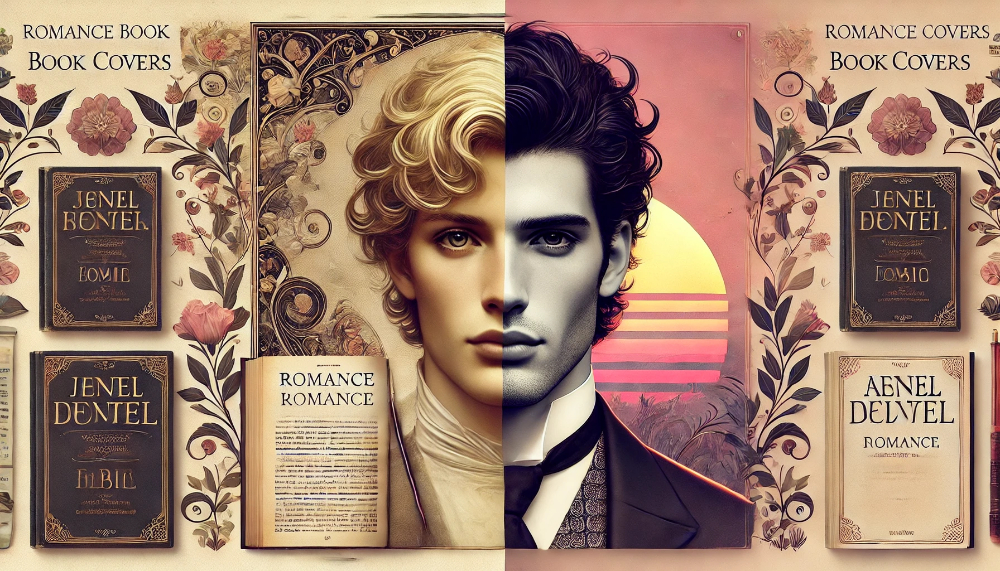
From SRP author Tracy Cooper-Posey:
If you’ve ever picked up a romance novel and thought, “Wait, that’s supposed to be the hero? Didn’t the author say he has a scar, dark curls, and a brooding stare? Why is this guy blond and smirking like a toothpaste model?”—you’re not alone. Romance readers have been puzzling over this for decades. Let’s unravel the mystery behind why cover characters often bear little resemblance to the people you’ve imagined from the pages of your favorite romance.
A Historical Perspective: The Stock Shortage
Back in the golden age of traditional publishing, cover design wasn’t about meticulously matching the hero’s description to an image. It was about what sold.
Publishing houses relied heavily on stock images—photos pre-shot and available for commercial use. These images were far from bespoke. If you needed a smoldering Highlander, you had to make do with whatever the stock catalog offered. Blond Fabio-looking warrior in a kilt? Close enough. Publishers weren’t interested in accuracy; they were interested in covers that would make readers grab the book.
This market-first approach meant little attention was paid to the finer details of a character’s description. After all, they figured readers weren’t picking up romances for their strict adherence to the text—they wanted vibes.
The Indie Revolution and Its Limitations
Fast forward to the rise of indie publishing. Suddenly, authors had the freedom to control every aspect of their books, from the words inside to the covers outside. But freedom didn’t mean unlimited resources.
Indie authors still relied on stock images, which hadn’t evolved much since the traditional publishing days. Custom cover art was an option, but commissioning a skilled artist who could create characters to spec was expensive—prohibitively so for many new authors.
As a result, many indie covers followed the same pattern as traditional ones: a “close enough” approach. Stock photos were combined, adjusted, or manipulated in Photoshop to create an appealing, marketable cover. But perfect fidelity to the hero described in the book? Still out of reach.
Enter AI: The Solution That’s… Complicated
AI image generators promise to revolutionize this longstanding mismatch. With AI, authors and cover designers can create characters who look exactly as described in the book—down to the most specific details, like a crooked nose or a burn scar along the jawline.
So why aren’t we there yet? The reasons are multifaceted.
1. Copyright Confusion
Who owns an AI-generated image? The creator? The AI company? The courts haven’t decided yet, and authors and publishers don’t want to wade into murky legal waters. Imagine putting out a book cover, only to find yourself in a lawsuit over who “owns” the hero’s face.
2. The Uncanny Valley Problem
While AI-generated images are improving rapidly, they’re not perfect. Sometimes the characters look too smooth, too symmetrical, or a little off. A human-like face that isn’t quite right can make readers uncomfortable—and uncomfortable readers don’t buy books.
3. Reader Backlash
Readers are a passionate bunch, and many are vocal about their dislike of AI-created art. They argue it devalues human artists and raises ethical concerns about originality. Some readers even boycott books with suspected AI-generated covers. For authors, alienating their audience is a risk few are willing to take.
4. Author Ethics
Many authors themselves are wary of AI. They see it as a tool that could undercut human artists and reduce opportunities for creatives. Until these ethical questions are resolved, AI use in covers will remain a contentious issue.
The Future: A Turning Point is Coming
Despite the current hurdles, AI is slowly infiltrating the world of book covers. Stock photo sites and professional cover artists are starting to use AI in their workflows, often blending it with traditional methods to produce high-quality, unique images.
AI image generators are also getting better. Recent advances have made it possible to create characters with more human-like flaws—crooked smiles, unruly hair, and all the imperfections that make a hero relatable.
Once the copyright questions are resolved (and court cases are in progress), the industry may see a shift. Authors who feel comfortable using AI will finally have the tools to create covers that match their heroes exactly as written.
What This Means for Readers
For now, romance readers will have to keep imagining the heroes and heroines described in the book rather than trusting the cover to deliver an accurate visual. But change is on the horizon. In the not-so-distant future, your favorite brooding duke or rugged cowboy might look exactly like the character you’ve been picturing all along.
And who knows? Maybe one day you’ll be able to create a custom image of your book boyfriend with a click of a button. Until then, let’s enjoy the variety of artistic interpretations—and keep an eye on what’s coming next.
What do you think about the current state of romance covers? Do you love the “close enough” look, or are you excited about the possibility of perfectly matched characters? Share your thoughts in the comments!
___________________________________

Tracy Cooper-Posey is SRP’s most prolific author. She writes all types of romance sub-genres, and women’s fiction, too. She also edits SRP’s Anthologies.
Check her SRP titles out here.



